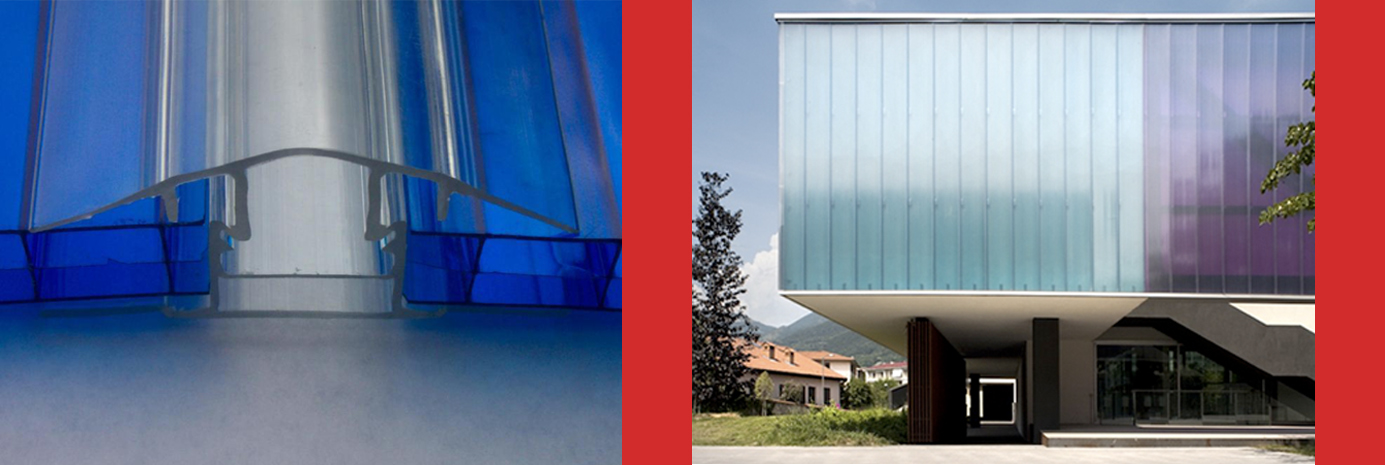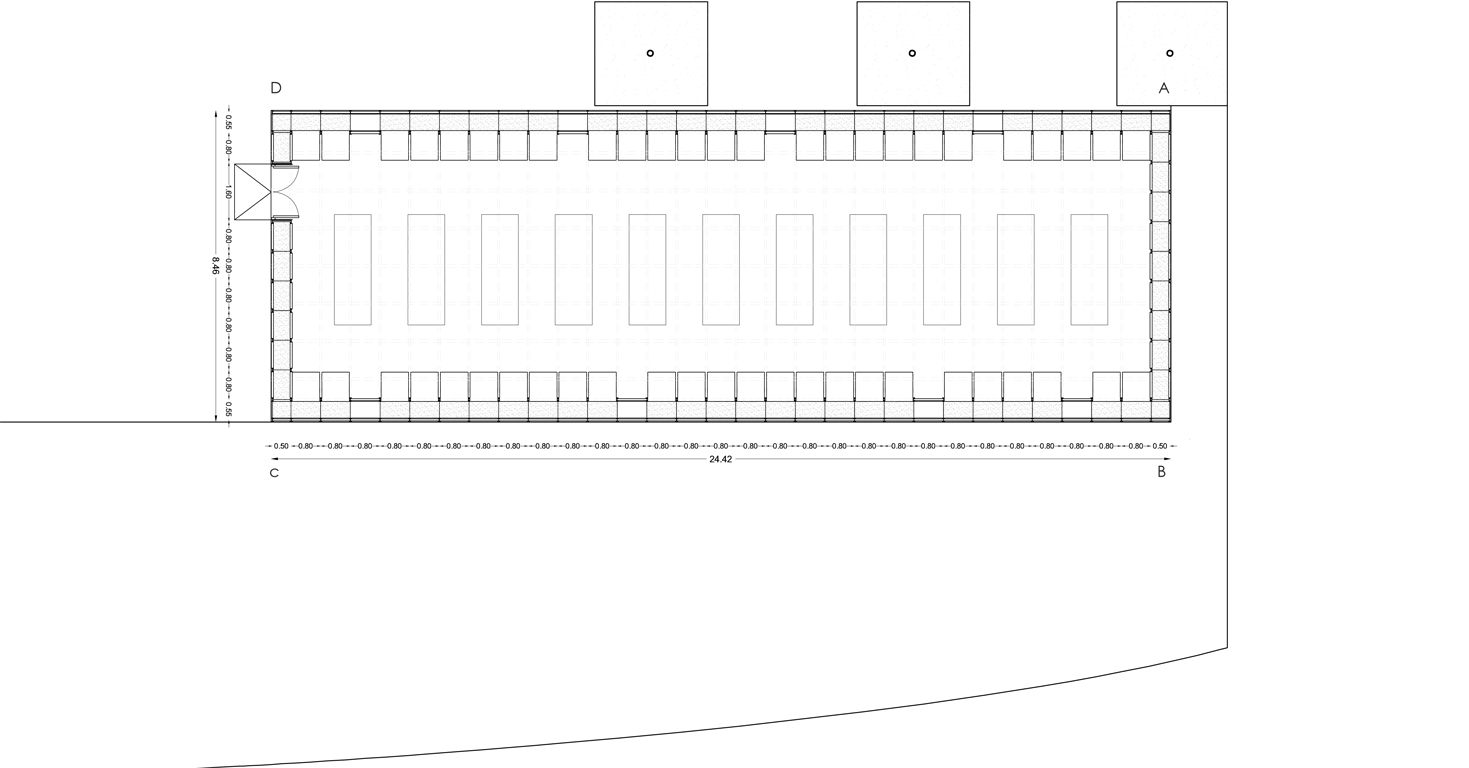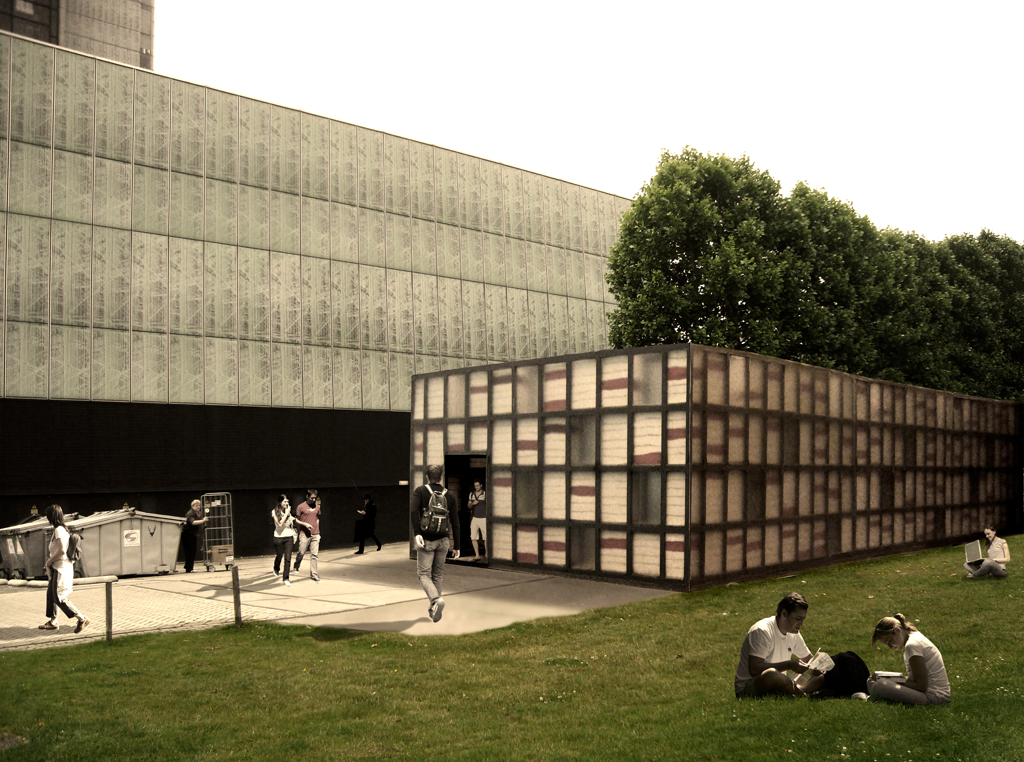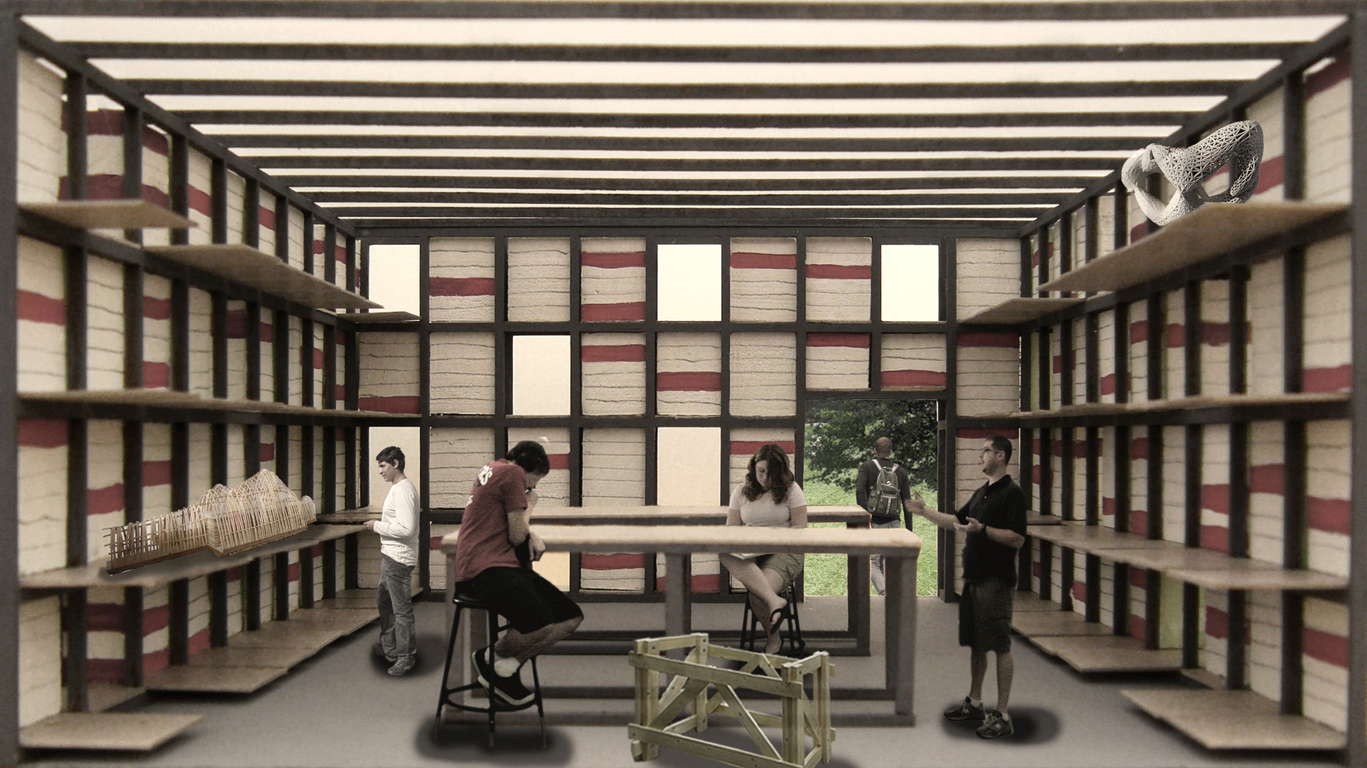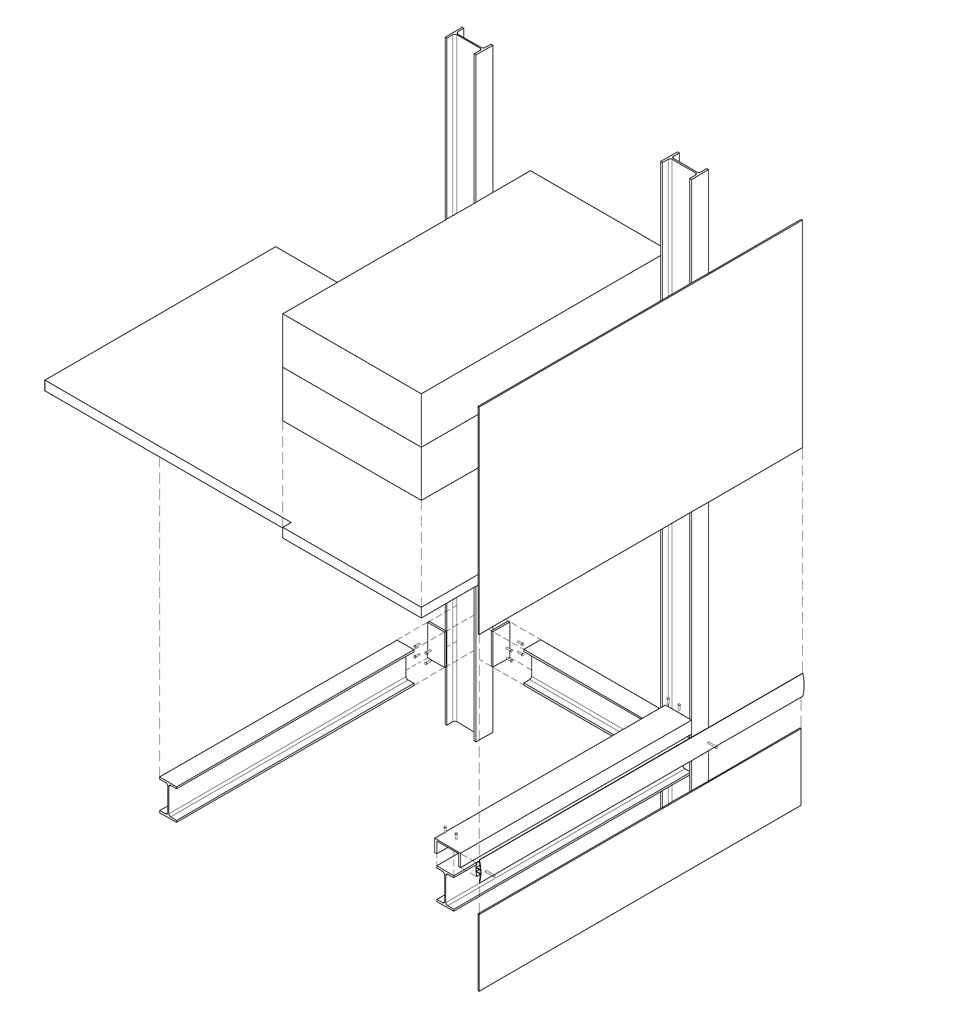Eindhoven University of Technology | Production and Parts
Professor: Jan Schevers
The subject: To design a temporary extension of 200 m2 to the model workshop in Vertigo building based on one of the materials of the detail we had made in first assignment. In my case, the detail was the roof detail of the Thermal Baths in Vals.
Concept
The basic material to be used in the temporary extension of the Vertigo building chosen from the first assignment is the earth. As the workshop is going to be placed next to Vertigo only for the summer semester and then be taken apart, all the materials used should be easy to store. For that reason, I have chosen the use of the earthbag building so as for the bags either to be emptied after one semester, or stored in packs.The main idea has been to create one low cost, self-standing building close to the Vertigo building. The building will have enough storage room for the models on its two longer facades and long working tables in the middle.
As far as the site is concerned, the parking area on the south part of Vertigo has been chosen as this is the only place around it where a building of 200m2 can fit.
Apart from the earthbags, a metal structure is used and the whole building is covered with polycarbonate sheets.
As the earth of The Netherlands is known for its high percentage of clay and sand, the earthbags can be filled in situ with the needed proportion. Another reason for the use of the earthbags is their high thermal mass. Their thermal performance is very high and for that Their thermal performance is very high and for this reason there is no need for installing a new heating system in the temporary workshop.
In order to enhance this thermal mass given by the earthbags, the use of 8mm thick polycarbonate sheets for the facades and the ceiling has been chosen as they are proved to be a good isolating material. Moreover, the exposure of the earthbags to the weather conditions for more than a couple of weeks can cause their destruction. However, because of the temporary quality of the structure, they cannot be covered with plaster. In that case, the polycarbonate sheets can cover the whole structure in order to protect the bags not only from the rain but also from the sun. They are light, resistant to deterioration, fire resistant and semi-transparent. Because of the fact that the ceiling can only be covered with a transparent material over the beams, the light that comes in through a semi transparent surface will cause no disturbance on the students working on their models in the temporary lab.
The building
The main structure consists of two rows of I-profile columns and beams. The area between every two columns is covered with the earthbags which are of size 0.45*0.80*0.15 m. The total height of the structure is 4.20m and is divided in four parts. In each part, a steel plate is placed on the beams between the two rows of columns. On top of each plate six earthbags are placed in order for the plate not to overturn. The earthbags stay firmly in their place as they are protected in their four corners by the columns of the two rows. Consequently, as the columns are repeated every 0.80m, there are 32 of them on the long sides and 10 on the short sides. Because of their number and the fact that the roof is covered only with the light polycarbonate sheets, their profile can be rather small (0.10*0.055m).Apart from the light coming from the ceiling, some earthbags are also missing so as to form open parts on the facades. Consequently, the interior is lit by natural light from the ceiling and the façade openings and by lamps hanging from the ceiling beams. The ventilation system tubes can also be suspended from the same beams. Finally, 11 tables (1*3m) are placed in the interior so that the students will have enough room to work on their models.

 Natalia Mylonaki
Natalia Mylonaki

